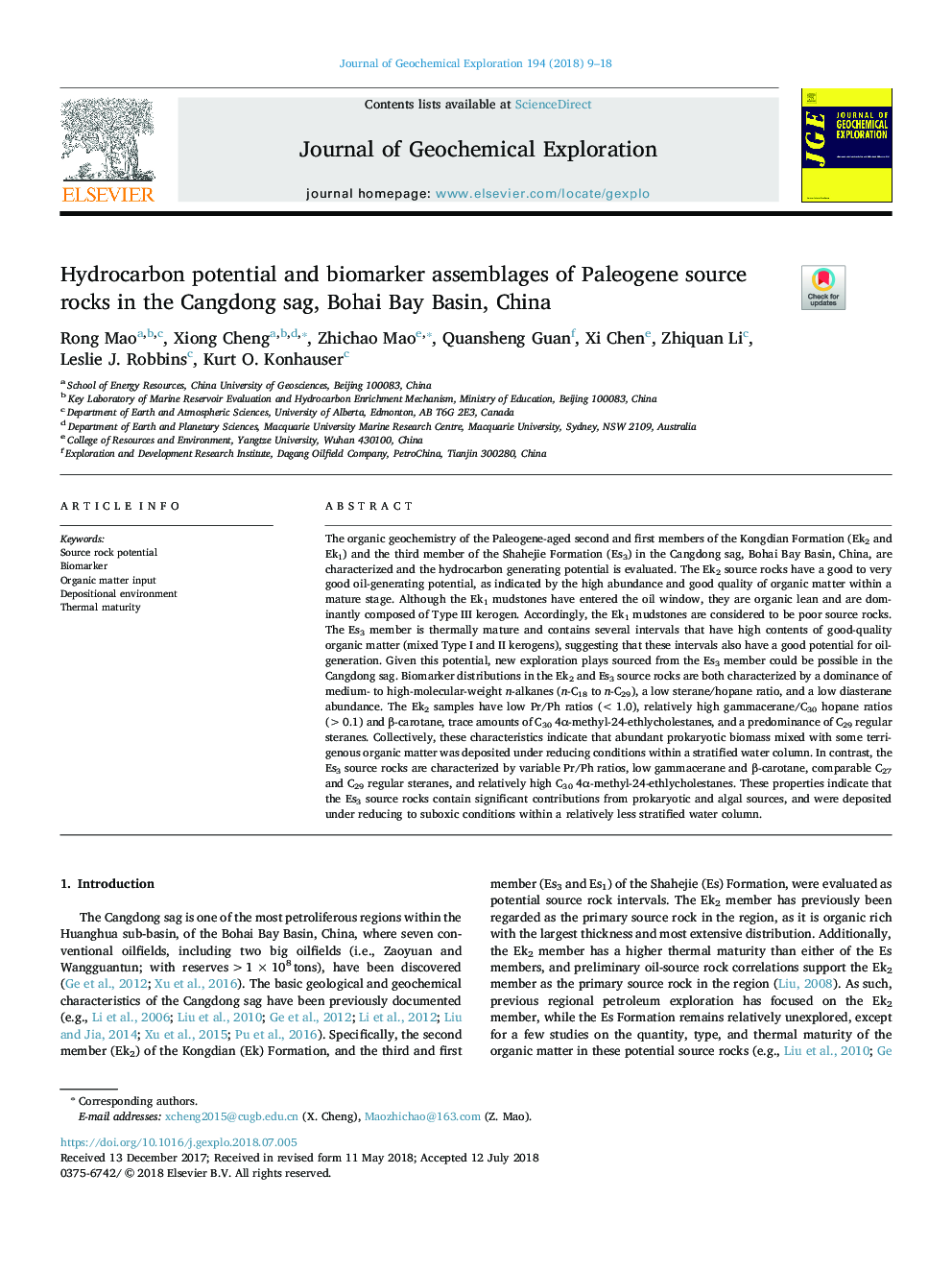| کد مقاله | کد نشریه | سال انتشار | مقاله انگلیسی | نسخه تمام متن |
|---|---|---|---|---|
| 8865823 | 1620864 | 2018 | 10 صفحه PDF | دانلود رایگان |
عنوان انگلیسی مقاله ISI
Hydrocarbon potential and biomarker assemblages of Paleogene source rocks in the Cangdong sag, Bohai Bay Basin, China
دانلود مقاله + سفارش ترجمه
دانلود مقاله ISI انگلیسی
رایگان برای ایرانیان
کلمات کلیدی
موضوعات مرتبط
مهندسی و علوم پایه
علوم زمین و سیارات
زمین شناسی اقتصادی
پیش نمایش صفحه اول مقاله

چکیده انگلیسی
The organic geochemistry of the Paleogene-aged second and first members of the Kongdian Formation (Ek2 and Ek1) and the third member of the Shahejie Formation (Es3) in the Cangdong sag, Bohai Bay Basin, China, are characterized and the hydrocarbon generating potential is evaluated. The Ek2 source rocks have a good to very good oil-generating potential, as indicated by the high abundance and good quality of organic matter within a mature stage. Although the Ek1 mudstones have entered the oil window, they are organic lean and are dominantly composed of Type III kerogen. Accordingly, the Ek1 mudstones are considered to be poor source rocks. The Es3 member is thermally mature and contains several intervals that have high contents of good-quality organic matter (mixed Type I and II kerogens), suggesting that these intervals also have a good potential for oil-generation. Given this potential, new exploration plays sourced from the Es3 member could be possible in the Cangdong sag. Biomarker distributions in the Ek2 and Es3 source rocks are both characterized by a dominance of medium- to high-molecular-weight n-alkanes (n-C18 to n-C29), a low sterane/hopane ratio, and a low diasterane abundance. The Ek2 samples have low Pr/Ph ratios (<1.0), relatively high gammacerane/C30 hopane ratios (>0.1) and β-carotane, trace amounts of C30 4α-methyl-24-ethlycholestanes, and a predominance of C29 regular steranes. Collectively, these characteristics indicate that abundant prokaryotic biomass mixed with some terrigenous organic matter was deposited under reducing conditions within a stratified water column. In contrast, the Es3 source rocks are characterized by variable Pr/Ph ratios, low gammacerane and β-carotane, comparable C27 and C29 regular steranes, and relatively high C30 4α-methyl-24-ethlycholestanes. These properties indicate that the Es3 source rocks contain significant contributions from prokaryotic and algal sources, and were deposited under reducing to suboxic conditions within a relatively less stratified water column.
ناشر
Database: Elsevier - ScienceDirect (ساینس دایرکت)
Journal: Journal of Geochemical Exploration - Volume 194, November 2018, Pages 9-18
Journal: Journal of Geochemical Exploration - Volume 194, November 2018, Pages 9-18
نویسندگان
Rong Mao, Xiong Cheng, Zhichao Mao, Quansheng Guan, Xi Chen, Zhiquan Li, Leslie J. Robbins, Kurt O. Konhauser,